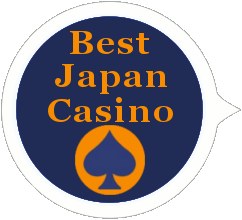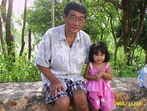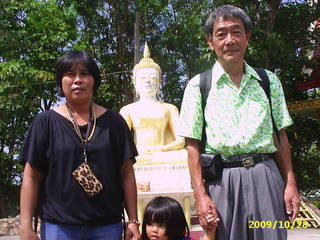2013年08月22日
はだしのゲン―閲覧制限はすぐ撤回を
The Asahi Shimbun, August 20, 2013
EDITORIAL: All children should have free access to ‘Hadashi no Gen’
はだしのゲン―閲覧制限はすぐ撤回を
The Matsue municipal board of education has instructed public elementary and junior high schools in the city not to make a famous manga about the atomic bombing of Hiroshima freely available to children in school libraries. The board’s move to restrict children’s access to “Hadashi no Gen” (Barefoot Gen) has drawn criticism from all over the nation.
広島での被爆を主題にした漫画「はだしのゲン」を、松江市教委が小・中学校の図書館で自由に読めなくするよう指示していたことがわかり、全国から批判が相次いでいる。
In the final parts of the book, some atrocities committed by the former Japanese army, such as beheading Asian people, are depicted. In December last year, the municipal education board decided that these descriptions are “extreme expressions” and asked principals to make sure that students cannot read the manga in the libraries without obtaining permission from the schools. It has also been withdrawn from circulation.
作品の終盤には、旧日本軍がアジアの人々の首を切断するなどの描写がある。市教委は昨年12月、「過激な表現だ」として、学校の許可なしで見られなくするよう校長会に求めた。貸し出しも認めないという。
“Hadashi no Gen” was created by manga artist Keiji Nakazawa, who died in December last year. In addition to the devastation of Hiroshima and people’s sufferings after the war, both of which he experienced himself, Nakazawa described, in shocking detail, various battlefield scenes he learned from historical records and materials. Due to its vivid descriptions of the frightful spectacles of war, the manga drew an immense response.
「ゲン」は昨年12月に死去した漫画家の中沢啓治(なかざわけいじ)さんの作品だ。実体験した原爆の惨状と戦後の苦難に加え、資料などで知った戦場の様子を強烈なタッチで描いて反響を呼んだ。
Many children became interested in the nuclear attacks against Japan in the closing days of World War II for the first time when they read “Hadashi no Gen,” one of the few manga books among the school library collection.
学校図書館で読める数少ない漫画として「ゲン」を手に取り、初めて原爆に関心を持った子どもも少なくない。
The education board’s decision could deprive children of a good opportunity to learn about the tragedy. Moreover, the board didn’t follow the rule that it must make any important decision in an open meeting of board members. The decision was made in an opaque manner by the secretariat of the board. The education board should immediately withdraw its directive concerning “Hadashi no Gen.”
市教委の指示は、子どもたちのそうした出会いを奪いかねないものだ。しかも重要な決定の場合、公開の教育委員会議にかけるべきだが、今回は事務局の判断で決まっており、不透明というしかない。市教委はただちに指示を撤回すべきだ。
The board’s move was made after a man submitted a written petition to the Matsue municipal assembly in August last year. The petition called for the removal of “Hadashi no Gen” from schools, claiming it described fictitious acts of barbarity by Japanese soldiers and had a harmful effect on the minds of children.
きっかけは、ある男性から昨年8月に市議会に出された陳情書だった。「ありもしない日本軍の蛮行が掲載され、子どもたちに悪影響を及ぼす」とし、学校からの撤去を求めていた。
Although the man’s demands were not accepted, some assembly members argued that the manga should be designated as a “bad book” and asked the education board to take appropriate action. The request led to the board’s move to restrict access to the manga in school libraries.
陳情は不採択となったが、一部市議から「不良図書」ととらえ、市教委が適切な処置をすべきだとの意見があり、閲覧制限の指示につながった。
Soon after Nakazawa started the manga series in the Weekly Shonen Jump comic magazine in 1973, his descriptions of the war were criticized as “brutal.” Nakazawa once said he had agonized over how to depict the war. Because it bitterly denounces the acts of the army and holds Emperor Hirohito, posthumously known as Emperor Showa, responsible for the war, conservatives criticize the manga as “biased” and “anti-Japanese.”
「ゲン」には連載当時から「残酷」という声が寄せられ、中沢さんも描き方に悩んだと述懐している。旧軍の行為や昭和天皇の戦争責任を厳しく糾弾している点から、「偏向している」「反日漫画だ」といった批判も保守層の間で根強い。
Still, “Hadashi no Gen” has been widely accepted because Nakazawa’s anti-war message has obtained a favorable response from children. By using all of his skills as an artist to describe the cruelty of war he witnessed, Nakazawa tried to tell children that war must never be allowed to happen again.
それでも、「ゲン」が高い評価を得たのは、自身が目の当たりにした戦争の残酷さを力いっぱい描くことで、「二度と戦争を起こしてはならない」と伝えようとした中沢さんの思いに子どもたちが共感したからだ。
Teachers, who generally had a negative stance toward manga, also embraced “Hadashi no Gen” and allocated part of the limited school library budget to add the manga to the library’s collection because of its power to send its anti-war message.
漫画を否定しがちだった先生たちが、限られた図書館予算の中から「ゲン」を積極的に受け入れたのも、作品のメッセージ力が強かったからこそだ。
There are still various views and opinions about the wartime acts of the former Japanese army and Emperor Hirohito’s responsibility for the war. Nakazawa’s historical views about the war as expressed in the work are also open to criticism.
旧日本軍の行為や天皇の戦争責任をめぐっては今もさまざまな見方があり、「ゲン」に投影された中沢さんの歴史観にも議論はありえるだろう。
“Hadashi no Gen” is exactly the type of material that can be used for discussions among adults and children on these and other issues concerning the war. There is no need to keep children from accessing this material.
それこそ、「ゲン」を題材に、子どもと大人が意見を交わし、一緒に考えていけばいい。最初から目をそらす必要はどこにもない。
EDITORIAL: All children should have free access to ‘Hadashi no Gen’
はだしのゲン―閲覧制限はすぐ撤回を
The Matsue municipal board of education has instructed public elementary and junior high schools in the city not to make a famous manga about the atomic bombing of Hiroshima freely available to children in school libraries. The board’s move to restrict children’s access to “Hadashi no Gen” (Barefoot Gen) has drawn criticism from all over the nation.
広島での被爆を主題にした漫画「はだしのゲン」を、松江市教委が小・中学校の図書館で自由に読めなくするよう指示していたことがわかり、全国から批判が相次いでいる。
In the final parts of the book, some atrocities committed by the former Japanese army, such as beheading Asian people, are depicted. In December last year, the municipal education board decided that these descriptions are “extreme expressions” and asked principals to make sure that students cannot read the manga in the libraries without obtaining permission from the schools. It has also been withdrawn from circulation.
作品の終盤には、旧日本軍がアジアの人々の首を切断するなどの描写がある。市教委は昨年12月、「過激な表現だ」として、学校の許可なしで見られなくするよう校長会に求めた。貸し出しも認めないという。
“Hadashi no Gen” was created by manga artist Keiji Nakazawa, who died in December last year. In addition to the devastation of Hiroshima and people’s sufferings after the war, both of which he experienced himself, Nakazawa described, in shocking detail, various battlefield scenes he learned from historical records and materials. Due to its vivid descriptions of the frightful spectacles of war, the manga drew an immense response.
「ゲン」は昨年12月に死去した漫画家の中沢啓治(なかざわけいじ)さんの作品だ。実体験した原爆の惨状と戦後の苦難に加え、資料などで知った戦場の様子を強烈なタッチで描いて反響を呼んだ。
Many children became interested in the nuclear attacks against Japan in the closing days of World War II for the first time when they read “Hadashi no Gen,” one of the few manga books among the school library collection.
学校図書館で読める数少ない漫画として「ゲン」を手に取り、初めて原爆に関心を持った子どもも少なくない。
The education board’s decision could deprive children of a good opportunity to learn about the tragedy. Moreover, the board didn’t follow the rule that it must make any important decision in an open meeting of board members. The decision was made in an opaque manner by the secretariat of the board. The education board should immediately withdraw its directive concerning “Hadashi no Gen.”
市教委の指示は、子どもたちのそうした出会いを奪いかねないものだ。しかも重要な決定の場合、公開の教育委員会議にかけるべきだが、今回は事務局の判断で決まっており、不透明というしかない。市教委はただちに指示を撤回すべきだ。
The board’s move was made after a man submitted a written petition to the Matsue municipal assembly in August last year. The petition called for the removal of “Hadashi no Gen” from schools, claiming it described fictitious acts of barbarity by Japanese soldiers and had a harmful effect on the minds of children.
きっかけは、ある男性から昨年8月に市議会に出された陳情書だった。「ありもしない日本軍の蛮行が掲載され、子どもたちに悪影響を及ぼす」とし、学校からの撤去を求めていた。
Although the man’s demands were not accepted, some assembly members argued that the manga should be designated as a “bad book” and asked the education board to take appropriate action. The request led to the board’s move to restrict access to the manga in school libraries.
陳情は不採択となったが、一部市議から「不良図書」ととらえ、市教委が適切な処置をすべきだとの意見があり、閲覧制限の指示につながった。
Soon after Nakazawa started the manga series in the Weekly Shonen Jump comic magazine in 1973, his descriptions of the war were criticized as “brutal.” Nakazawa once said he had agonized over how to depict the war. Because it bitterly denounces the acts of the army and holds Emperor Hirohito, posthumously known as Emperor Showa, responsible for the war, conservatives criticize the manga as “biased” and “anti-Japanese.”
「ゲン」には連載当時から「残酷」という声が寄せられ、中沢さんも描き方に悩んだと述懐している。旧軍の行為や昭和天皇の戦争責任を厳しく糾弾している点から、「偏向している」「反日漫画だ」といった批判も保守層の間で根強い。
Still, “Hadashi no Gen” has been widely accepted because Nakazawa’s anti-war message has obtained a favorable response from children. By using all of his skills as an artist to describe the cruelty of war he witnessed, Nakazawa tried to tell children that war must never be allowed to happen again.
それでも、「ゲン」が高い評価を得たのは、自身が目の当たりにした戦争の残酷さを力いっぱい描くことで、「二度と戦争を起こしてはならない」と伝えようとした中沢さんの思いに子どもたちが共感したからだ。
Teachers, who generally had a negative stance toward manga, also embraced “Hadashi no Gen” and allocated part of the limited school library budget to add the manga to the library’s collection because of its power to send its anti-war message.
漫画を否定しがちだった先生たちが、限られた図書館予算の中から「ゲン」を積極的に受け入れたのも、作品のメッセージ力が強かったからこそだ。
There are still various views and opinions about the wartime acts of the former Japanese army and Emperor Hirohito’s responsibility for the war. Nakazawa’s historical views about the war as expressed in the work are also open to criticism.
旧日本軍の行為や天皇の戦争責任をめぐっては今もさまざまな見方があり、「ゲン」に投影された中沢さんの歴史観にも議論はありえるだろう。
“Hadashi no Gen” is exactly the type of material that can be used for discussions among adults and children on these and other issues concerning the war. There is no need to keep children from accessing this material.
それこそ、「ゲン」を題材に、子どもと大人が意見を交わし、一緒に考えていけばいい。最初から目をそらす必要はどこにもない。
【このカテゴリーの最新記事】
-
no image
-
no image
-
no image
-
no image
-
no image
この記事へのコメント
コメントを書く





